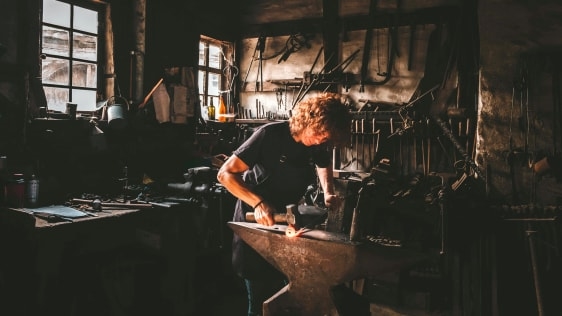Want a secure financial future? Consider the side hustle
In a matter of months, the makeup of America’s workforce has been completely overturned. Swift transitions to remote work have resulted in, according to Gallup, 7 in 10 employees working from home today. And even though unemployment in the U.S. fell to 8.4% in August 2020, the number of available jobs still remains far below pre-pandemic levels.
As we continue to acclimate to life during a pandemic, running a side hustle may crystallize into a facet of the future of work.
The evolution of the side hustle
According to Merriam-Webster, when the term side hustle first entered our language in the 1950s it was used to reference “work performed for income supplementary to one’s primary job.” But including the word hustle gave the impression that a side hustle could refer to both a legitimate job or a scam, evoking the image of a swindler. Eventually, the term evolved to predominantly refer to a legitimate supplemental job. In recent years, the side hustle has often been related to one’s hobbies or passions, such as wedding photography or making and selling handicrafts, that also could generate extra income.
But today, at a point in history when millions of Americans remain unemployed and the world continues to grapple with a health crisis, people are turning to their second-priority side hustles out of necessity and means of economic survival. At the same time, our current circumstances have prompted us to seriously revisit our potentially outdated perspective on what’s typically been deemed a “stable” or “unstable” career path.
More and more Americans are looking to their side hustles as a saving grace, whether they need to pursue it in a full-time capacity due to job loss, or part-time capacity with the goal of having more ownership over one’s financial security in an unpredictable environment.
Future, meet the side hustle
The pandemic has debunked the notion that the only way to achieve financial freedom is through a traditional, 9-to-5 corporate desk job. During a time that’s fraught with high and low emotions, mass layoffs, and low wages—side hustles can provide a safety net.
Industry trends to support side hustles
With the onset of COVID-19 came a flurry of activity as entrepreneurs sought to create side-hustle businesses that would support the needs of a population increasingly based at home and online.
For example, drop-shipping and e-commerce platforms have fared well during this time. My drop-shopping firm, Spocket, saw its merchant base double between March and July of this year as those worried about their financial future explored side hustles.
Some side hustles that emerged in the online-merchant space include remote workouts and coaching sessions, video channels that utilize advertising, and e-commerce shops, such as those selling and deliver baked goods or homemade artisan products. With the rise of the home office, and the need to bring outdoor elements right into our living spaces, many e-commerce merchants have started selling houseplants and indoor plant accessories. And when gyms and fitness studios shut down, some merchants began selling athleisure apparel or yoga accessories.
To develop a side hustle, start by considering how you will describe this time period once the pandemic does calm down. Did you use the time to expand your network and connect with people from other industries, broadening your opportunities and skills? If you are a college graduate, did you tutor your neighbor or receive extra income by editing a friend’s term paper? These are just some examples of developing yourself, productively, to eventually launch a side hustle.
Side hustles and work-life balance
In a world that’s fast-paced and unpredictable, achieving a sustainable work-life balance is no easy feat. But now in the wake of COVID-19, we’re seeing a growing number of people making time for life and work a priority. Maintaining this balance is essential to mental health and relationships, both personal and professional.
Perhaps in our near future, running a side hustle could become part of the new normal for American working professionals, offering a potential career path that supports one’s mental wellness and is sustainable through the pandemic (and beyond).
Saba Mohebpour is the founder and CEO of Spocket, a drop-shipping platform and marketplace that connects merchants with verified U.S. and European-based suppliers.
(7)



